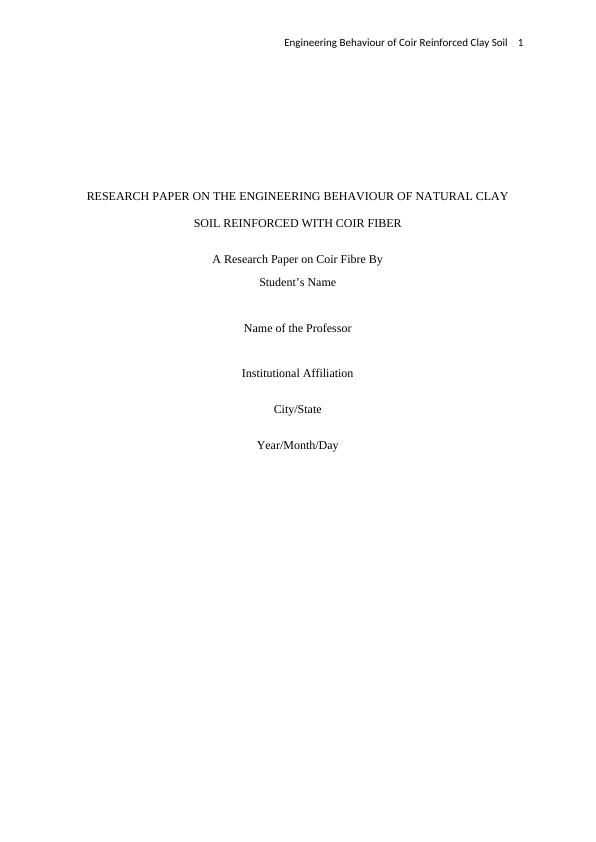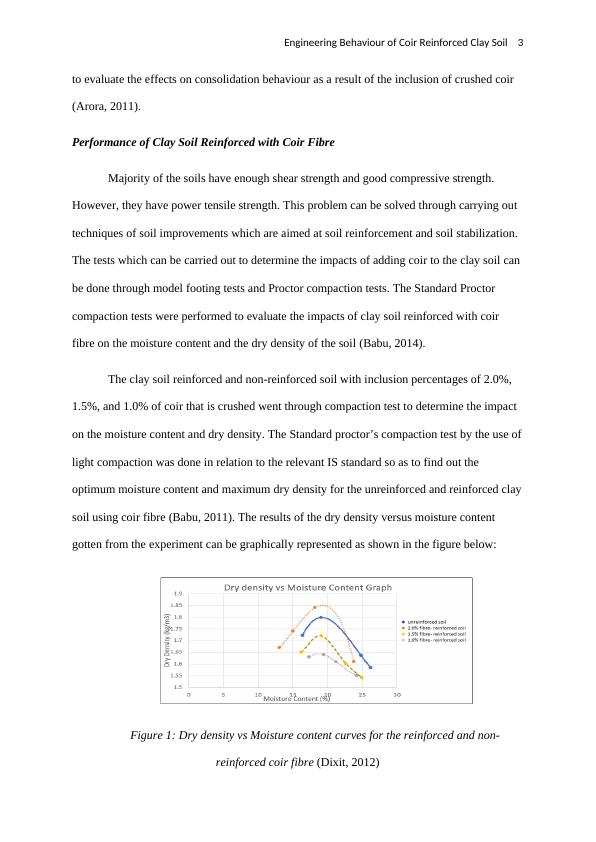Engineering Behaviour of Coir Reinforced Clay Soil
The assignment requires analyzing the compaction characteristics of clayey soil reinforced with human hair fiber based on laboratory results and conducting a critical review of literature on the strength behavior of such reinforced soil.
15 Pages4009 Words326 Views
Added on 2023-06-15
About This Document
This research paper investigates the engineering behaviour of reinforced clay soil with crushed coir through carrying out consolidation test and compaction test. The coir that is crushed is composed of 100% natural fibre which was gotten from coconut husks. The paper discusses the performance of clay soil reinforced with coir fibre, strength behaviour of clay soil reinforced with coir fibres, and effects of coir fibre reinforcement on CBR value and strength of clay soil.
Engineering Behaviour of Coir Reinforced Clay Soil
The assignment requires analyzing the compaction characteristics of clayey soil reinforced with human hair fiber based on laboratory results and conducting a critical review of literature on the strength behavior of such reinforced soil.
Added on 2023-06-15
ShareRelated Documents
End of preview
Want to access all the pages? Upload your documents or become a member.
Engineering Behaviour of Clay Reinforced with Cocopeat
|11
|2462
|39
Research Paper on Clay Soil Reinforced with Cocopeat
|7
|1567
|87
Report Paper on Engineering Behaviour of Clay with Cocopeat
|13
|2915
|269




